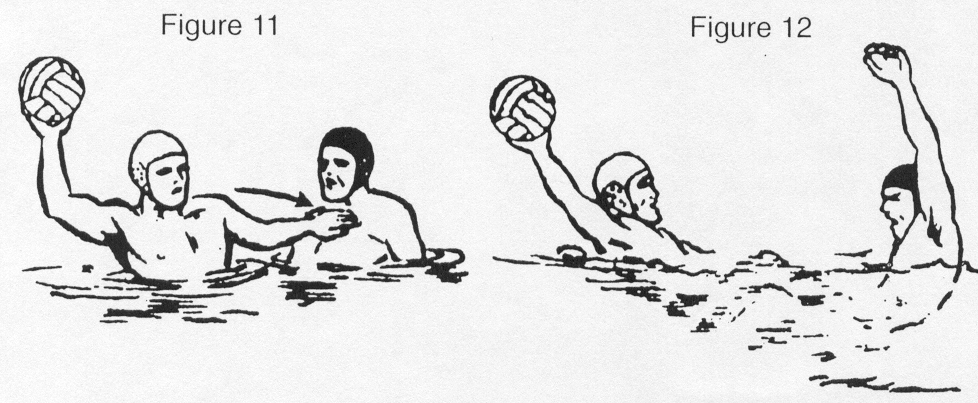









|
BASIC DIAGRAMS OF FOULS Water Polo is a sport where Fouls can be a useful tool to gain advantage. However, whenever one team has the advantage, the other has the disadvantage. Learning when to foul, and what foul you should commit is a skill learned over time. Below is a breif description of the fouls and how the referee will call them. Important Rules: .
Examples of Minor Fouls: 1. When a player pushes off the
side of the pool (or the bottom).
Examples of Major Fouls: 1. If the offensive player intentionally
comes in contact with the defensive player:
A common form of impeding is where the player swims across his opponent’s legs (figure 7 below), Another form is swimming on the opponent’s shoulders. It must also be remembered that the foul of impeding can be committed by the player who is in possession of the ball. For example, (figure 8) shows a player keeping one hand on the ball and trying to force his opponent away.(Figure 9) shows a player in possession of the ball impeding his opponent by pushing him back with his head. (Figure 10) shows a player intentionally blocking his opponent with his body and with his arms.
|